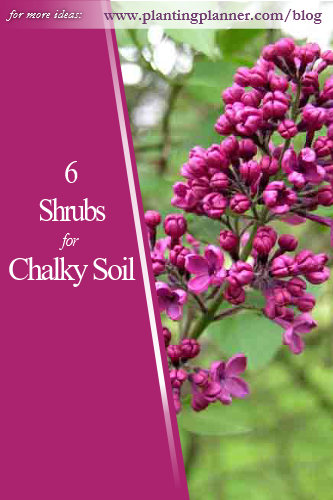from The Weatherstaff PlantingPlanner – intelligent garden design software
Alkaline-tolerant Shrubs for Chalk and Limestone Conditions
If you garden on chalk or limestone, you probably already know that acid-loving plants, like rhododendrons and heathers will not be happy in your soil. Your plants will need to be able to cope with alkaline conditions and frequently dry and nutrient-poor conditions.
Here is a selection of shrubs which should feel right at home in your garden.
Weigela
Weigela ‘Florida Variegata’ has been awarded the Royal Horticultural Society’s Award of Garden Merit (AGM). It is a bushy, deciduous shrub with arching stems, growing to 2.5 metre in height. The grey-green leaves, margined creamy-white, are useful for providing foliage in cut flower displays.
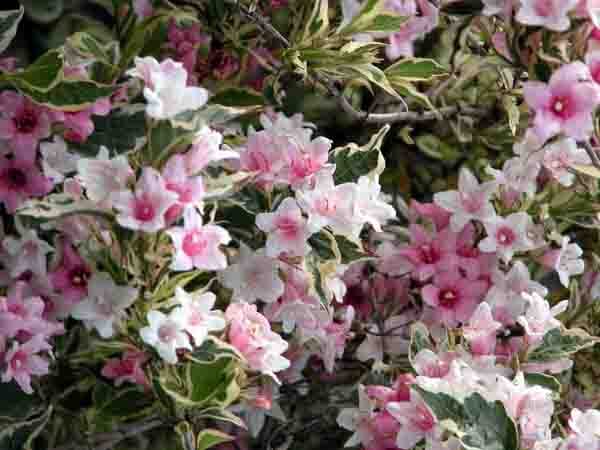
Attractive, funnel-shaped, pale rose-pink flowers, loved by bees, appear in profusion from late spring to early summer. A reliable garden shrub, it grows well in either sun or partial shade.
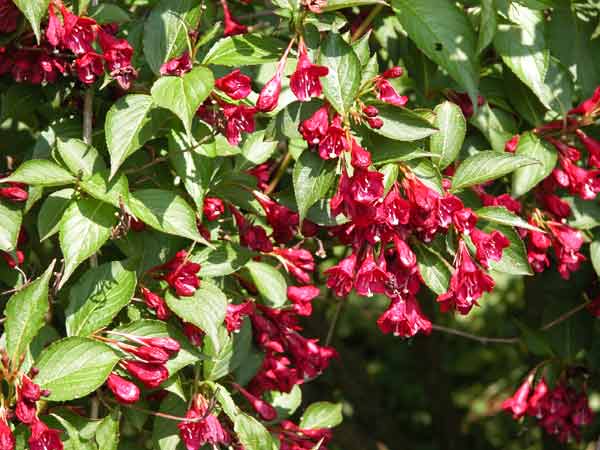
Weigela ‘Bristol Ruby’ has dark green foliage and pretty, bell-shaped, deep red flowers. Weigela ‘Ebony and Ivory’ is a low-growing weigela (0.5m high x 0.8m spread). It has elegant white flowers and dark green foliage, which takes on plum tones as the season progresses.
Sambucus
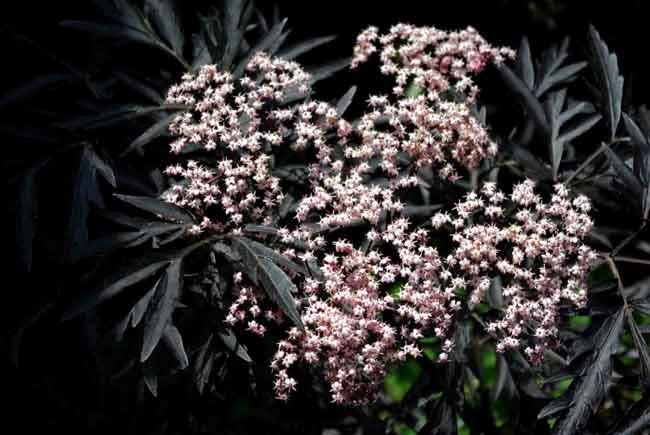
Sambucus nigra f. porphyrophylla ‘Eva’ (syn. Sambucus Black Lace) is a beautiful black elder, which has been awarded the prestigious AGM. It grows to 6m high but can be coppiced regularly if needed. The deeply dissected, purple-black leaves turn rich red in autumn.
Coloured leaves do better in full sun or light shade. Regular cutting back also results in darker leaves. In early summer, flattened heads of scented, pale pink flowers are produced. These are followed by glossy purple-black berries. Though all parts are poisonous when eaten, the fruits are edible when cooked or can be used to make elderberry liqueur. The pretty scented flowers can be used to make elderflower cordial.
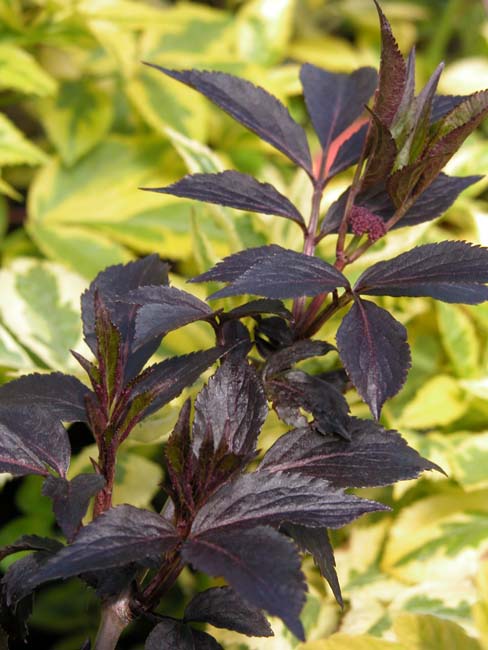
Sambucus nigra f. porphyrophylla ‘Gerda’ (syn. Sambucus Black Beauty) also has an AGM. Leaves are dark purple-black and its early summer flowers are pale pink. It grows to 4m in both height and spread.
Sambucus nigra ‘Golden Tower’ has an upright habit, growing to an eventual height of 3 metres x 1 metre spread. It has yellow-green deeply dissected foliage and clusters of white flowers.
Olearia
Olearia × haastii is a dense, bushy evergreen shrub growing to 2m height x 3m spread. The glossy, olive green leaves have pale, felted undersides. Clusters of daisy-like, white flowers with yellow centres are carried profusely in mid- to late summer, giving it the common name of Daisy Bush.
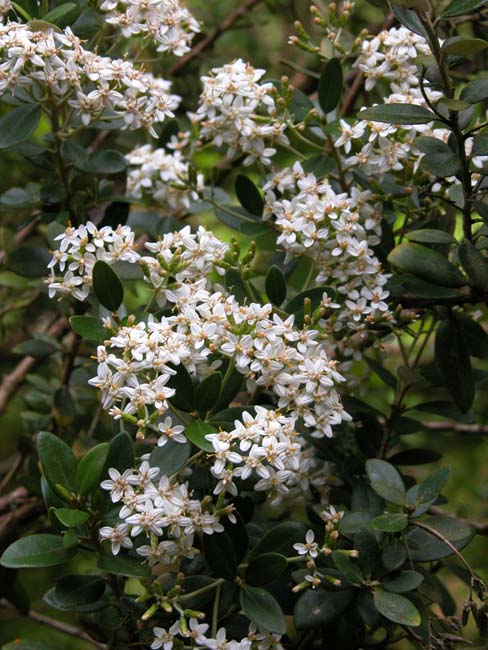
Olearia phlogopappa ‘Spring Bling’ is slightly smaller at 1.5m height and spread. The narrow, wavy-edged, aromatic leaves are grey-green, felted underneath. The shrub is highly floriferous and is covered in daisy-like flowers in late spring and early summer. It needs a sunny, sheltered spot in colder areas.
Olearia copes well with salt-laden winds, so is great for coastal gardens. It can be pruned regularly to make an informal, flowering hedge. The shrub is particularly attractive to bees and butterflies.
Ceanothus
Ceanothus ‘Autumnal Blue’ (AGM) is a fast growing, evergreen shrub, it will eventually reach 3m in height. It has glossy, dark green leaves and trusses of tiny mid-blue flowers from late summer and into autumn. It can be grown in a shrub border or trained against a sunny wall.
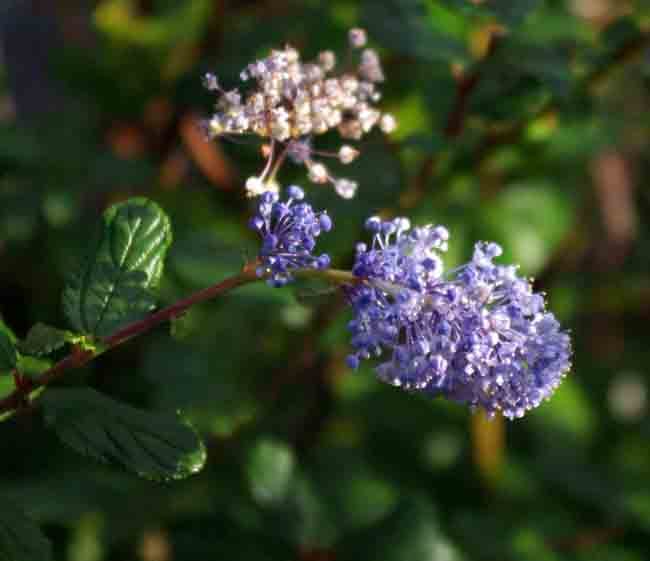
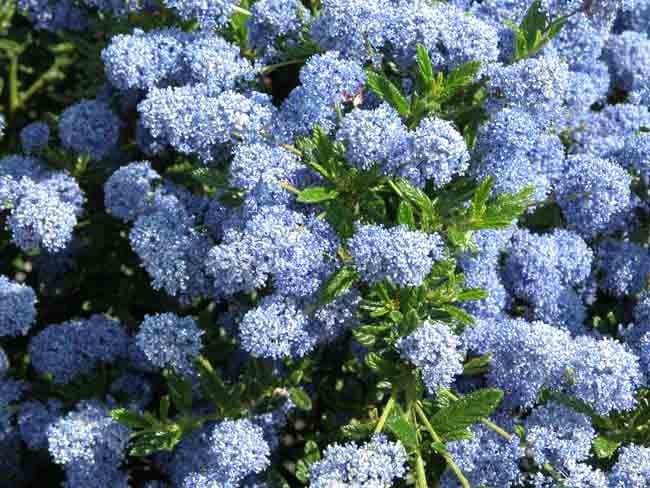
Ceanothus impressus ‘Puget Blue’ is another AGM plant, growing to 3m tall.
From mid- to late spring, the entire bush is covered by a profuse display of tiny, dark blue flowers, loved by bees. Its dark green leaves are small and prominently veined. Puget Blue’ is not fully hardy, so grow in a sunny, sheltered spot and give winter protection while the plant is young.
Though lime tolerant, Ceanothus may suffer chlorosis on very chalky soil, causing leaves to yellow. Applying sequestered iron may be helpful. Sprinkle fertiliser around the plant in early spring to boost its nutrient levels. The shrub is attractive to bees and other beneficial insects.
Philadelphus
Philadelphus (or Mock Orange) is an easy-going shrub – happy in well-drained soil in full sun or part shade. It is also tolerant of air pollution and coastal conditions. Philadelphus likes moisture so, on fast-draining chalk soils, it may require regular watering.
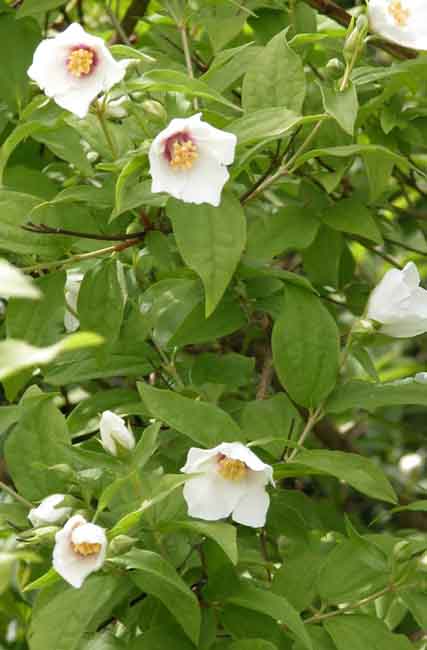
Philadelphus ‘Belle Etoile’ (AGM) is a neat shrub (1.2m height x 2.5m spread), with highly fragrant flowers, white, with a purple splash at the base. The flowers are borne in profusion in late spring and early summer. Arching stems carry mid-green, deciduous foliage.
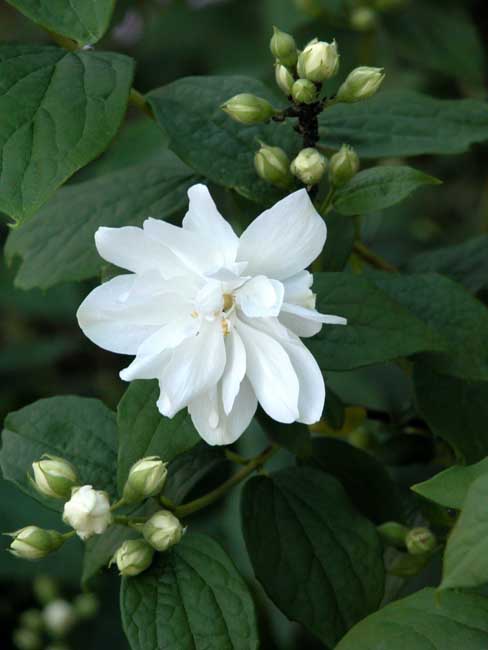
Philadelphus ‘Snowbelle’ is a more compact mock orange (1.2m x 1.2m). It carries an abundance of citrus-scented, double white flowers in late spring and into summer.
Virginal is also double-flowered and more vigorous, growing to 3m in height.
Lilac
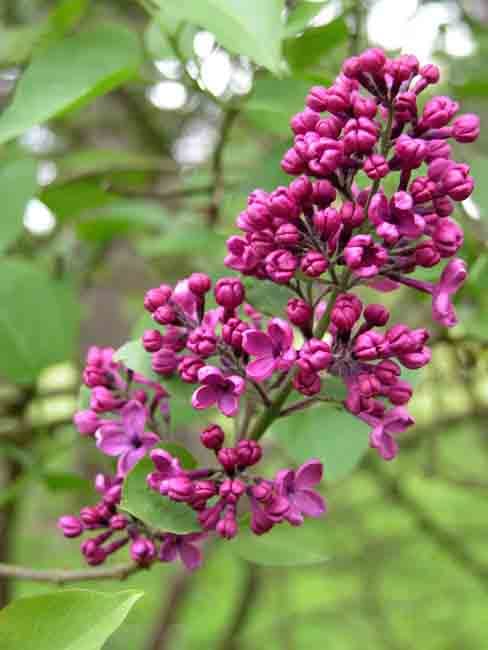
The sweetly-perfumed lilacs are well-suited to chalk soils. Syringa vulgaris is the common lilac and many of these superb plants have been awarded AGM status. They include ‘Katherine Havemeyer’ (double, lavender-blue flowers), ‘Andenken an Ludwig Späth’ (single red-purple flowers) and ‘Charles Joly’ (double dark purple-red flowers).
Pin for later
For more gardening ideas, click here to follow the Weatherstaff PlantingPlanner on Pinterest.


